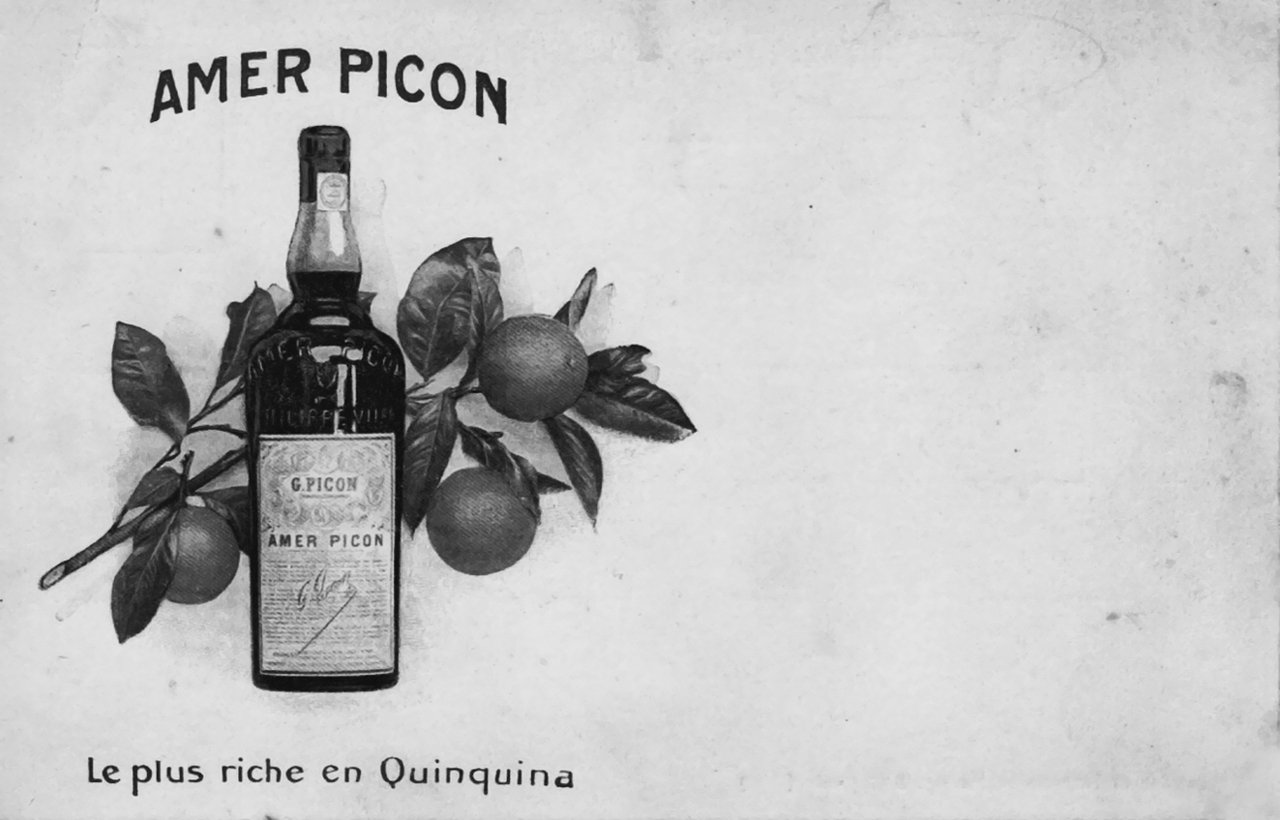Picon or Amer Picon is a brand of French digestive bitter launched in French Algeria by Gaëtan Picon (1809–1882), a soldier with distilling experience. Born in Genoa when the city was temporarily under French control, Picon was raised in Marseille and apprenticed in distilleries in the south of France. In 1830, he joined the “Armée d’Afrique,” which executed the French colonization of Algeria. While in Africa, like many other French soldiers, he contracted a tropical fever, which was treated with quinine-infused wine and other bitters, as was traditional. This experience prompted him in 1837 to try to develop a better-tasting, more effective tonic for African conditions. In 1840, having come up with a formula based on bitter and sweet orange peels augmented with gentian, quinquina, and rhubarb, he quit the army and started a small distillery in the port city of Philippeville (modern Skikda). Soon Picon’s Amer Africain was being consumed in quantity throughout French Algeria, and he built two more distilleries.
Yet even though Picon’s bitter had won the first of its many international medals at London’s Great Exhibition in 1862, it wasn’t until the aftermath of the Franco-Prussian war that it gained a foothold in France itself, having been brought there by soldiers from Algeria. In 1872, he built a distillery in in Marseille and renamed his product Amer Picon. By 1909, Amer Picon was being made in four distilleries in France and employing the peels of some three million oranges a year, all from Algeria. It was exported all over Europe and to America and featured in several popular cocktails, including the Brooklyn. See Brooklyn Cocktail.
Its initial proof seems to have been 40 percent ABV. In the 1920s it was reduced to 38 percent, then to 27 percent in the 1970s, and finally, in 1989, to 18 percent. Today the brand is owned by Diageo, the world leading group of spirits and wines. Diageo has yet to revitalize it or fully restore its proof, something that has benefited many other heritage brands, putting its energy instead into marketing Picon Bière, a slightly stronger (21 percent), sweeter offshoot tailored for the popular, if fading, French practice of mixing Amer Picon with beer. As a result, Amer Picon’s influence on the cocktail revolution is more as an item of nostalgia than as a living product. In fact, a number of modern mixologists have taken to recreating their own versions of the classic Amer Picon, based on other bitters, neutral spirits, and other ingredients.
De Berques, A. “Une grande marque.” La Dépêche coloniale illustrée, September 31, 1909, 82–87.
By: Fernando Castellon
 Postcard for Amer Picon, with oranges. Ca. 1900. Source: Wondrich Collection.
Postcard for Amer Picon, with oranges. Ca. 1900. Source: Wondrich Collection.
